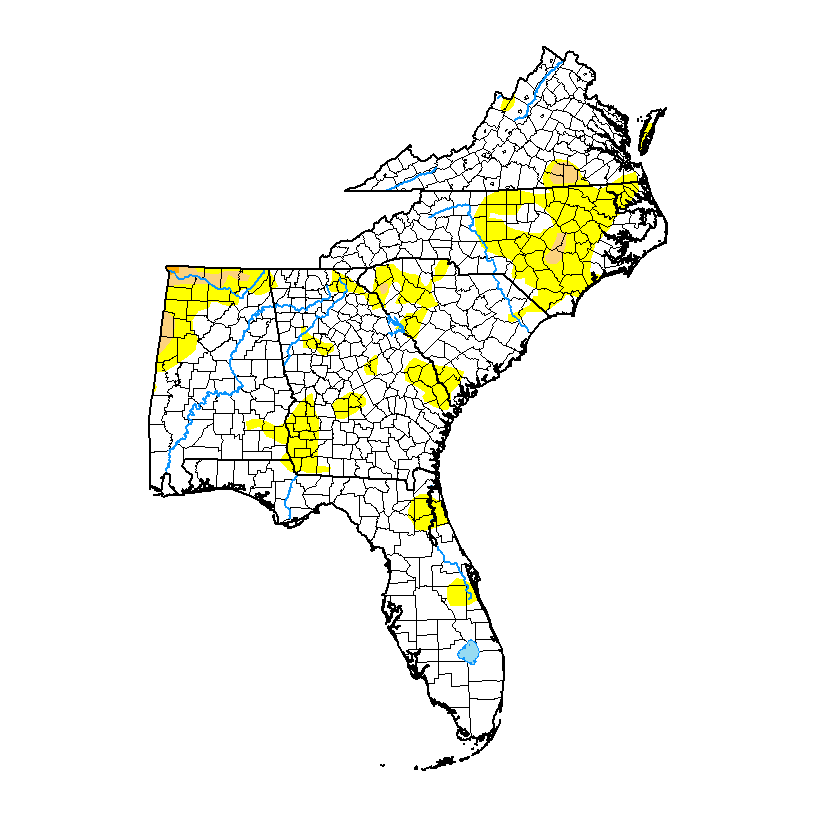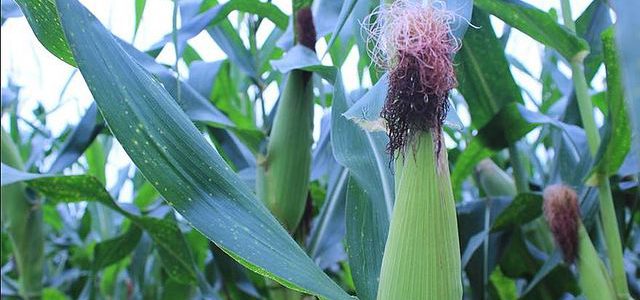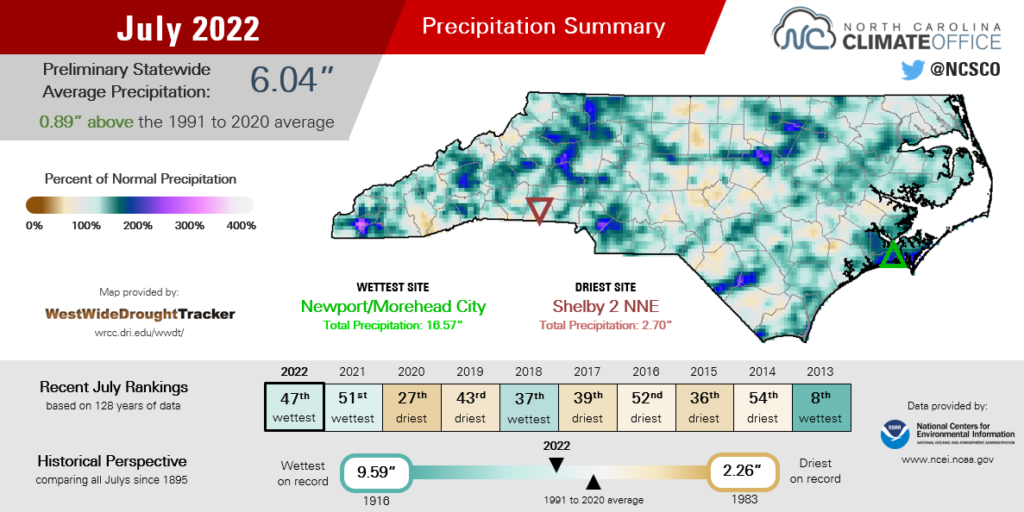-

The latest Drought Monitor, released this morning, shows a decrease in the dry conditions across most of the Southeast due to recent rains across the region, although because the rain has been so spotty, the map will necessarily miss some small areas of dry conditions that were missed by the rain. The conditions in Puerto…
Posted in: Drought -

When I lived in Wisconsin and the summer weather turned exceptionally hot and humid, we always blamed the cornfields in Iowa for the high humidity. In fact, we were right! The Corn Belt puts a lot of water into the air as all those corn plants transpire water into the atmosphere. In fact, if you…
-

The latest monthly climate summary for July 2022 is now available from the North Carolina State Climate Office. Check out their steamy statistics at A Warm, Wet July Extends Our Steamy Summer – North Carolina State Climate Office (ncsu.edu).
Posted in: Climate summaries -

Note: While this outlook is primarily for Georgia, it should hold true for most of the southern part of our region as well. The temperature in July was generally slightly cooler than normal, with daytime temperatures below normal (from clouds) and overnight temperatures warmer than normal due to the abundant humidity we have experienced this…
Posted in: Climate outlooks -

The Specialty Crop Industry newsletter posted a story this week by Clint Thompson describing some of the negative effects of the recent heat wave on vegetable crops in Alabama (and by extension, most of the rest of the Southeast as well). Sunscald was seen on some watermelons, and the high temperatures sped up the tomato…
-

The preliminary climate results for July 2022 show that most of the region experienced wetter than normal conditions as well as slightly above normal temperatures. South Florida was the exception with drier than normal conditions, but their temperatures were also warmer than normal. Northern Alabama was the most above normal in temperature and was also…
Posted in: Climate summaries -

The latest 7-day QPF map shows that the heaviest rain for the next few days is likely to be along a front that is draped through Kentucky and Tennessee and east into North Carolina. Unfortunately, that means that those areas could see more floods as moisture continues to flow into the area. Most of the…
Posted in: Climate outlooks